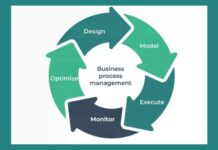Human Resources (HR) departments have seen a significant shift with the introduction of AI technology, transforming the traditional manual screening process. AI tools offer precision, efficiency, and strategic insight, saving time and providing near-real-time information. The integration of modern technology and creative approaches helps HR departments attract, retain, and manage talent effectively. AI and machine learning are the top trends in HR tech in 2024, making the hiring process more efficient and transforming the talent acquisition industry. AI-powered algorithms evaluate resumes, screen candidates, and use past data to predict suitability, while ML algorithms analyze employee data for performance insights, aiding HR departments in making informed decisions about promotions and job assignments.
As we step into 2024, offering a glimpse of how these trends shape the future of HR is experiencing a transformative journey, thanks to the integration of Artificial Intelligence (AI) and Machine Learning (ML).
Generative AI
Generative AI is one of the most impactful technological innovations that can revolutionize various HR and talent management processes. This form of artificial intelligence enables freeing up the attention of the HR leaders which is aimed at the more fundamental functions as it automates some of the HR operations and provides an intelligent assistance. It is possible to generate new data, pictures, message etc. using the existing data. Generative AI is transforming HR, talent, and leadership teams in performance management, employee engagement and recognition, recruitment, HR service delivery, etc. Generative AI also provides huge productivity gains enabling faster-time-to-market entry for products/services; and enhanced customer experience.
Another way AI can be used is by analyzing the available data pertaining to employees’ experience, reasons for departures, as well as the quality of leaders’ pipeline. Ultimately, the best HR technology of tomorrow will feature a hub-and-spoke design that centers on one primary set of data and various applications attached it. With the development of generative AI, human resource departments must continue adjusting if they intend to be successful within their field. This will help them save on resources, enhance employee satisfaction, and concentrate on other key tasks. A survey by Deloitte indicates that 33% of HR leaders are already using AI and ML to enhance recruitment while 41 percent will start adopting these tools in the next two years. Another study showed that half of the respondent HR leaders see AI/ML as the future of HR.
Compensation Management
Compensation is one of the major factors in attracting and retaining top talent. In 2024, HR departments will increasingly rely on AI and ML to analyze compensation data and ensure that employees are paid fairly. These technologies can help identify pay gaps and provide insights into how to close them. They can also help HR departments develop more accurate and data-driven compensation plans that align with the organization’s goals and values. By incorporating artificial intelligence into organizations’ operations, they are able to concentrate specifically on individualizing reward structures that reflect employees’ preferences and requirements. Such an approach creates value and engages workers. Use of data and analytics in making, informing and explaining compensation decisions and practices is also taking root. It assists employers to benchmark their pay and benefits as per the market and also ensure transparency.
49% percent of HR heads perceive that technology, especially AI and ML, will have a major impact on compensation management as revealed by a PwC survey.. The same survey found that 52% of HR leaders are already using AI and ML to analyze compensation data, and 34% plan to do so in the next two years. With changes in the compensation landscape, HR needs to keep up with the times and use AI and ML for a better compensation management process that attracts and retains top professionals.
Proactive Talent Development
By leveraging AI and ML, HR directors can proactively identify talent gaps and develop targeted training programs to address them. These technologies enable the analysis of employee data to identify key competencies and provide insights into enhancing them. AI can also help in designing specific, evidence based training programs that are in line with the mission, vision of the company. Further, it would include learner centered pathways that are customized on the needs and the interests of a learner.
AI and ML in HR are designed to enhance human capabilities and can be instrumental in delegating tasks, rather than replacing employees altogether. These technologies can automate HR tasks, support decision-making, and provide personalized learning experiences for employees. AI tools can analyze data on employee experience, identify talent gaps, and personalize career development and training programs. They can also support managers in developing and deploying talent, ultimately creating strategic advantages for the business. These technologies have the potential to enhance HR capabilities, support decision-making, and create a more connected and data-driven HR tech ecosystem, ultimately driving strategic advantages for the business.
HR directors can find talent gaps in advance and develop training programs for filling them up. Through employee data analysis, they help identify key competencies for the firm and suggest a way of enhancing them. In addition, these technologies could help develop training programmes which are more specific, evidence based, aligned with company vision and mission. AI/ML can evaluate each employee’s performance to personalize the curriculum or content to individual needs/interests of each worker. Armed with this wide range of inputs, AI can produce factual, convenient, customized to enterprise’s needs, as well as personalized learning pathways targeting deficiencies of every individual person’s professionalism.
For instance, according to a Gartner report, 69 percent of HR leaders think that AI/ML will affect in skills development. The same survey found that 39% of HR leaders are already using AI and ML to identify skills gaps, and 31% plan to do so in the next two years.
Streamlining Administrative Functions through Automation
HR departments are changing as a result of the use of artificial intelligence (AI) for HR automation. AI’s primary advantage for HR is its capacity to optimize a range of HR procedures, resulting in increased efficiency and effectiveness. Automating human resources tasks with artificial intelligence (AI) also streamlines daily administrative chores like payroll, benefits administration, and leave approvals. Enhanced accuracy, decreased administrative burden, and quick reaction times are among the advantages. This will result in higher employee satisfaction and people will be given more authority to handle their HR-related responsibilities.
82% of HR leaders according to McKinsey believe that AI/ML will influence in employee engagement. An identical survey showed that 41% of HR managers have already used AI and ML in enhancing staff engagement programs, while another 32% will take a similar course in the coming two years.
HR Tech
In 2024, HR departments will increasingly rely on AI and ML to improve HR service delivery and streamline HR processes. The degree of power, intelligence, and sophistication in HR technology as a whole is always increasing. Simply to stay ahead, organizations must scale and accelerate growth, improve talent management, deliver consistent UX and support, and make more informed decisions. It requires a holistic strategy to stay on top of compliance issues and other work-related rules and legislation, as they are constantly changing.
Workplaces that are flexible, remote, hybrid, and multi-hub add an incredible degree of complexity that AI and machine learning (ML) can manage, streamline and overcome. These technologies can also automate many HR tasks, such as onboarding, benefits administration, and performance management, freeing up HR leaders to focus on more strategic activities. They can also provide intelligent assistance to employees, helping them navigate HR processes more efficiently. HR Technologist carried out a survey whereby it was revealed that 67% of the HR leaders thought AI and ML are going to play a crucial role in the future of HR service delivery. That same survey discovered that 45 % of the HR heads are already using AI and ML to automate HR tasks and 32 % of them would implement such within the next two years.
Final thoughts
AI and ML are transforming the HR landscape, and the trends of 2024 reflect this transformation. Executive surveyed in a global study by the IBM Institute for Business Value (IBV) believe that over the course of the next three years, implementing AI and automation will need reskilling 40% of their staff. This change is seen as creating more job opportunities. HR departments will be directly impacted by this shift as employers search for candidates to fill positions that require additional responsibilities and employees hunt for new positions as their own roles evolve. Adopting AI into HR technologies could help HR departments in this evolving environment. New AI technologies are quickly moving past efficiency to become innovative tools, which frees up team members to consider HR from a more strategic perspective while maintaining a human touch.
In most firms today, the technologies help to cut the costs linked to HR, promote positive relationships among colleagues as well as employees and their managers, and make HR processes more productive. They are also using AI and ML to analyze compensation data, identify skills gaps, and develop training programs to close them. However, organizations with HR leaders who adopt these technologies and integrate them into future HR plans will be ready to attract, retain, and manage high-performing employees moving forward.














